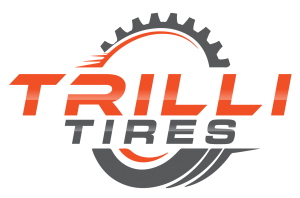Speeding down the highway can be exhilarating, but have you ever considered the toll it takes on your tires? While high-speed driving might seem like a thrill, it can significantly impact the longevity of your tires. In this article, we’ll delve into how driving fast regularly can wear out your tires and the mechanisms through which speed affects tire durability.
The Science Behind Tire Wear
Before diving into the effects of speed, it’s crucial to understand the science behind tire wear. Tires experience wear due to various factors, including friction, heat, and road conditions. Friction between the tire and the road surface generates heat, causing the tire rubber to degrade over time. Additionally, road hazards such as potholes and debris can accelerate tire wear by causing abrasions and punctures.
Impact of Speed on Tire Longevity
- Increased Heat Generation: One of the primary ways speed affects tire longevity is through increased heat generation. As you drive faster, the friction between the tires and the road surface intensifies, leading to higher temperatures. Elevated temperatures can accelerate the breakdown of tire rubber, leading to premature wear and reduced lifespan.
- Greater Stress on Tire Components: High-speed driving subjects tires to greater stress, particularly on their internal components such as belts and sidewalls. The centrifugal force exerted on the tires at high speeds can cause them to flex and deform more than usual, putting strain on these critical components. Over time, this stress can weaken the structural integrity of the tires, making them more susceptible to damage and failure.
- Increased Risk of Impact Damage: Driving at high speeds significantly increases the risk of encountering road hazards such as potholes, debris, and uneven surfaces. When tires strike these obstacles at speed, they experience sudden impacts that can lead to sidewall bulges, tread separation, and even blowouts. Such impact damage not only reduces tire longevity but also poses safety risks for the driver and passengers.
- Exacerbated Wear Patterns: High-speed driving can exacerbate irregular wear patterns on tires. Factors such as improper tire inflation, misalignment, and aggressive driving behaviours are magnified at higher speeds, leading to uneven tread wear. Over time, these wear patterns can compromise tire performance and necessitate premature replacement.
Mitigating the Effects of High-Speed Driving
While it’s difficult to entirely avoid the wear and tear associated with high-speed driving, there are several measures you can take to mitigate its impact on tire longevity:
- Maintain Proper Tire Inflation: Keeping your tires properly inflated is crucial, especially when driving at high speeds. Underinflated tires are more prone to overheating and premature wear, while overinflated tires can lead to uneven wear patterns and reduced traction. Regularly check your tire pressure and adhere to the manufacturer’s recommendations.
- Monitor Tire Condition: Periodically inspect your tires for signs of wear, damage, or irregularities. Look for indications such as uneven tread wear, bulges, cuts, and punctures. Address any issues promptly to prevent further damage and ensure optimal tire performance.
- Drive Responsibly: While it may be tempting to push the speed limit, exercising restraint and driving responsibly can significantly extend the life of your tires. Avoid aggressive acceleration, braking, and cornering, as these behaviours can accelerate tire wear and increase the risk of damage.
- Invest in High-Quality Tires: Opting for high-quality tires designed to withstand the rigours of high-speed driving can provide added durability and longevity. Choose tires that are engineered for performance and equipped with features such as reinforced sidewalls and advanced tread compounds.
Driving fast regularly can take a toll on your tires, compromising their longevity and performance. The increased heat generation, greater stress on tire components, risk of impact damage, and exacerbated wear patterns associated with high-speed driving all contribute to premature tire wear and reduced lifespan. By understanding these effects and taking proactive measures to mitigate them, you can prolong the life of your tires and ensure a safer driving experience.
For top-quality tires and expert advice on maximizing tire longevity, visit TrilliTires in Richmond Hill today. Our experienced team is dedicated to helping you find the perfect tires for your vehicle and driving needs. Don’t let high-speed driving wear out your tires prematurely – trust TrilliTires for all your tire needs.
